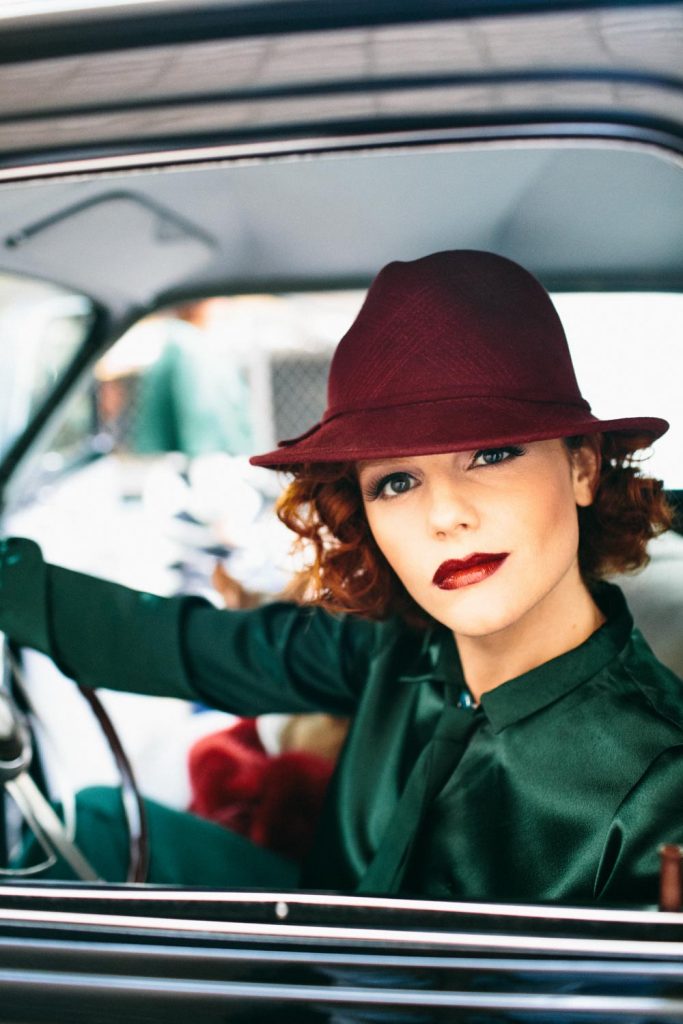
Meeting someone for the first time in a crowded place without ever having met them is some kind of psychological telltale. I’m no Carl Jung, but I can generalize pretty well. There are the control freaks. You might get a series of texts from them like: “I’m in the corner under the picture of Charro . . . I’m at the bar in a ridiculous hat . . . I’m about to walk in the main entrance right now.” Then there are the more carefree types who decide to rely on instinct. The latter is way more fun. I’m secretly hoping that one day I’ll agree to meeting a stranger in a bar, and when I get there, it will be that serendipitous day when one hundred other people will also be waiting for carefree strangers. For now, I’m just sitting in a taco joint, waiting to meet Hazel Jones, a burlesque dancer from the newly reopened Skull’s Rainbow Room in Printer’s Alley.
My first email from Jones read: “I can show you around the alley, we could chat in my bou- doir, or if you like, we could go on an adven- ture. If you like to talk and shop or talk and ride, we could hit the vintage shops or cruise in a classic car for our chitchat. Let me know what you prefer. XO, Hazel Jones.” Few first meetings offer that kind of intrigue. Yes to all of the above.
Dwight Yoakam is playing on the shitty-awesome speakers at Mas Tacos. I’ve just finished a Mexican Coke when the door swings open. Her personality seems to slip in the door a minute or two before her springy red curls. Dressed in a mohair crop top and Jackie-O shades, she’s barely in the cantina when she spots me and hollers across the room: “You ready?” Clearly she’s one of the carefree types.
I hop in the passenger seat of a gigantic truck, and we head toward downtown. She picks right up into conversation, like we’ve known each other for years.
Me: “What are you doing with this big truck? You got horses outside of town?”
Jones: “It’s mine. I’ve been living in an Airstream trailer for a year. We got it in Phoenix last year, and we took it to Venice Beach and up to Oregon. We just moved out of the trailer and into an apartment across the street from Skull’s. I’m there all the time, and it’s easier for me to do that. Plus, she’s an old girl. 1972. It’s gonna be a cold winter, and she’s needs a bit of insulation.”
Even though I’ve just devoured a couple carne molidas, Jones talks me into a cheeseburger at Robert’s Western World. After all, she’s in the business of indulgence. She seems to know everyone there. I grab a beer and she whisks me up to the tip-top of the building to meet the management there, telling me about her Robert’s tenure: “This was my first job when I came to Nashville. I asked around, and everyone said this was the coolest bar. Believe it or not, a bartending job at Robert’s is hard to get. When I turned in my resume, I wrote a little note to the owner on there: ‘Hey Jesse, long time no see.’ When the office manager called me about the resume, she asked how I knew Jesse. I just said, ‘We’re both friends of Fred.’ When I showed up, Jesse was there and totally took the bluff and acted as if we knew each other. I got the job and eventually confessed after we’d known each other a year or so.”
The burgers come out, and Jones tells me about growing up seven and a half miles west of Remote, Oregon, in a primarily blue-collar logging culture. She began her singing career by replying to an ad in the classifieds. “I found these old men that had a blues band in their basement across the river in Vancouver, Washington. I was like seventeen, eighteen years old and I show up at their basement and they’re like, ‘What is this girl doing?’ So I started in blues, because that’s what was available.”
Jones’ foray into burlesque was equally ballsy. “I found burlesque through Dita Von Teese and was mesmerized. I was going to college, and I heard Sinferno was hiring—they were the hottest burlesque cabaret in Portland, and they were holding tryouts in front of an audience. I just decided I was going to do it. I knew I’d be good at it. So, I watched a bunch of burlesque performers on YouTube and then went to the the S&M shop, Spartacus, and bought my first pasties. Sinferno held their tryouts at Dante’s club after the last act at 2 a.m. I was underage at the time and told them I was a burlesque performer from out of town. After their last act at 2 a.m., they brought me up. I was really nervous—it took a couple of whiskies to kill the fear. In front of a rowdy bunch, I sang ‘Minnie the Moocher’ and took my clothes off for the first time, and the crowd went wild. They said, ‘You’re hired every week from now on.’”
While on Airstream sabbatical with her new husband, she got a call from Skull’s co-owner, Phil Martin. Phil knew Jones from her days singing and playing in his other Printer’s Alley club, Bourbon Street Blues and Boogie Bar. “I had built a substantial following with my soul band at Bourbon Street—when I played there it was packed and stayed packed. Phil had heard that I used to do burlesque in Portland, so after he opened Skull’s, he called me to come work there and create a real, live-music burlesque scene. By the time I got back to Nashville, he already had a bunch of really great dancers. He wanted it to become even more of a show, a throwback to the ’40s and ’50s with live music, not just an iPod, and he knew I could lead a band. So I came in July to head it up. I’m really fascinated with the history of the whole place.” With a burger and a root beer down, Jones asks, “The library is right around the corner. Wanna go?”
“Duh.”
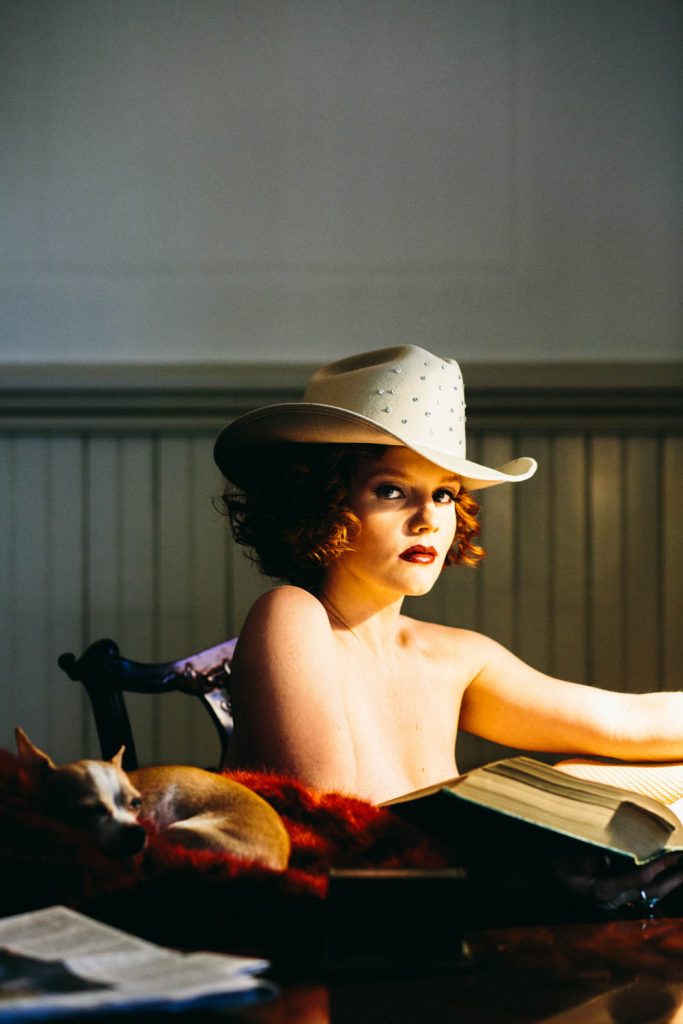
“THE CREATIVE USE OF FEMALE SEXUALITY IS A POWERFUL TOOL.”
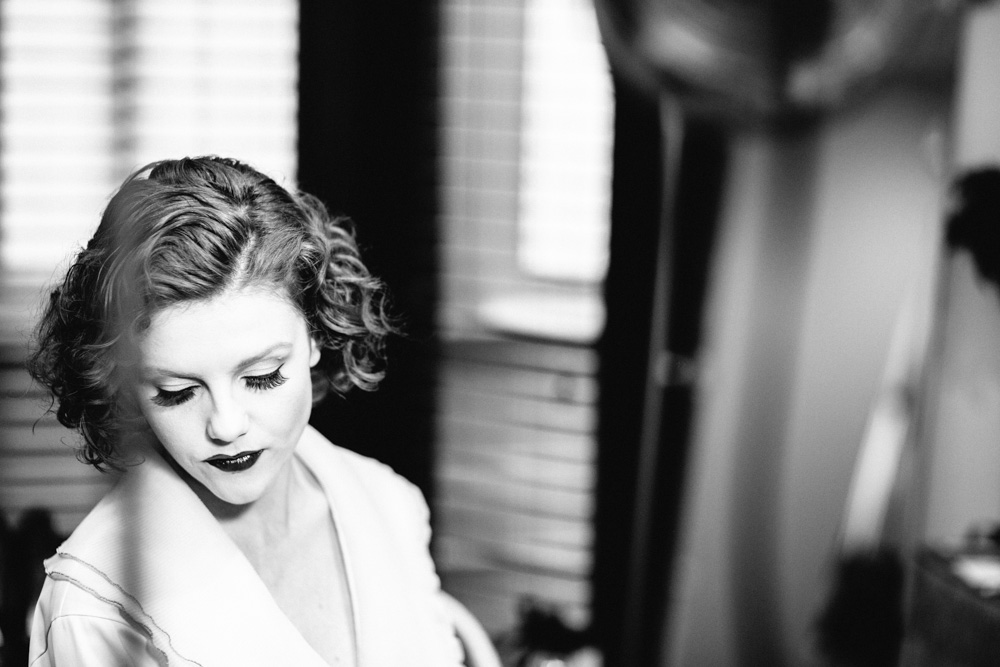
At the library, Jones walks straight to the reference desk and asks for the file they’ve assembled on Printer’s Alley. We settle into a study table overlooking Church Street and begin thumbing through the yellowed articles, popping our heads up now and again when we find something good—a quote, pictures of old dancers, the obituary of the original owner. We’re much louder than we should be, but it seems like we can get away with it today.
David “Skull” Schulman opened Skull’s in 1948. During his nearly half-century tenure there and at other Printer’s Alley clubs he owned, Skull became known as a colorful character and “Mayor of Printer’s Alley.” Skull’s became host to a broad swath of entertainers—many of which went on to become huge stars. Andy Griffith, Tim McGraw, and Waylon Jennings all played Skull’s early on in their careers. “The alley will always be here, I expect . . . and I’ll be here with it,” Schulman is quoted as saying. Those days of Skull’s came abruptly to an end when the eighty-year-old was found with his throat slit in January 1998, the victim of murder and robbery.
The place remained boarded up until Phil Mar- tin and David Wileman put it all back together and reopened for business about a year ago. After considerable mechanical overhauls, the aesthetics of the buildout were aimed at respecting the legacy and history of Skull’s. Many of the features of the club have been preserved—the stage and the bar are in roughly the same spots, the thick stone wall in the back. Hazel Jones’ footsteps on stage are in roughly the same place as one of her idols, a notorious and illustrious dancer of the ’70s, Heaven Lee.
“Do you have anything on Heaven Lee?” she asks the librarian. Jones comes up empty-handed. I eventually find several articles on her. My favorite is from 1974. Lee gets invited to an interview with sports broadcaster Randy Smith during the MTSU basketball game. Being the savvy PR expert, she agrees. During halftime, Smith calls her down to the middle of the court. All of the coaches and announcers scatter, not wanting to associate with her in public. Lee begins her interview by say- ing, “Oh, Randy, so nice to be here with you and so many of my MTSU friends,” then proceeds to name all of the men who had just gotten up and left. Of course the not-so-subtle hint was that she already knew these men from the club and was calling them out for giving her the cold shoulder.
Lee rode a horse naked through Nashville in 1970 to protest pollution—then a bike in 1979 (with clothes on and heels, but still) during the fuel shortage. Even beyond her talent and appeal, Lee seemed to have a penchant and knack for publicity. I ask Jones what she likes so much about Heaven Lee: “I admire her business savvy and ability to rustle up publicity. She was politically ahead of her time, and I believe, a true artist. It’s not just rebellion that excites me. It’s the creative use of female sexuality. It is a powerful tool, and I find it fascinating when certain women are able to harness what is often a burden and use it to create art, gain financial independence, or enact political change.”
We check in our folder of newspaper clippings and walk down to Skull’s. I’ve never seen burlesque gals putting on makeup, except in Moulin Rouge. There are walls of clothing and notes for costume changes. Notes on a sewing machine for things that need stitching. Jones’ curls are all tame now and shaped into a lovely bouffant for country night. Something about talking in a makeup room humanizes everything—seeing the eyelashes and the paint go on is a peculiar break of the fourth wall.
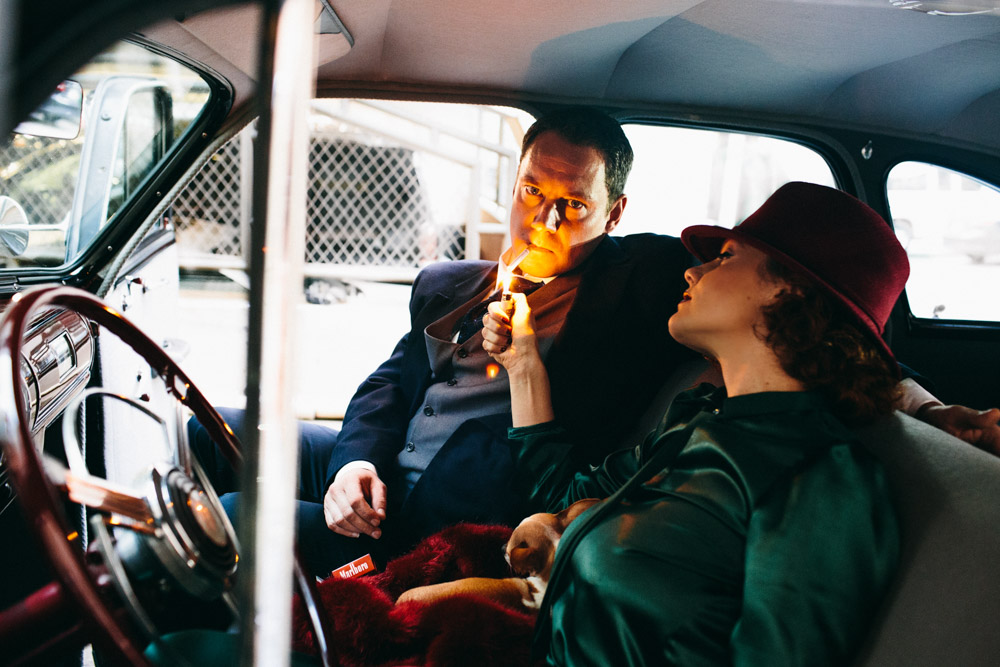
I shuffle out to the club in time for my food—filet and potatoes and green beans. The place is dark, woody, and nostalgic, a stark contrast to the more sleek and industrial-chic farm-to-table joints on every other corner. Don’t get me wrong, I love farro, but something about the basics seems fresh. It’s the best filet I’ve had in Nashville to date. And then, as if I’ve been in a Tarantino film all day, Jones consummates the evening with country classics for her gals, saving her nakedness for last. I’ll spare those juicy details because I don’t want to sound like a creep. That said, I definitely recommend the filet and the details.
In this day and age, there are a million ways to make art, then reach out and connect that art with strangers, friends, and old aunts who just want you to accept their invitation to Candy Crush. You can make a record in your bedroom that sounds like magic. You can make beautiful movies right on your phone. But when everyone has the capability, there’s even more static to cut through if you want to make a tiny place in the world for what you do.
We are constantly being courted by some form of entertainment. In a sense, Jones has to cut through Netflix to fill Skull’s. She also has to cut through the competition of the umpteen hundred clubs on Lower Broadway. Lord knows it takes a special kind of charisma to be more compelling than Netflix and Lower Broad. Carrying the torch of Heaven Lee and Skull’s means finding a fresh and new way to cut through the static of the city. After an afternoon and a night with Jones, I know there’s something there—the kind of something that makes you want to ride shotgun in a big truck with a beautiful lady, grab a cheeseburger over Hank Williams, and ransack a library’s old periodicals be- fore ending up in a boudoir with half-naked women. And it’s that something that’ll keep people coming back to Skull’s night after night.
Suggested Content
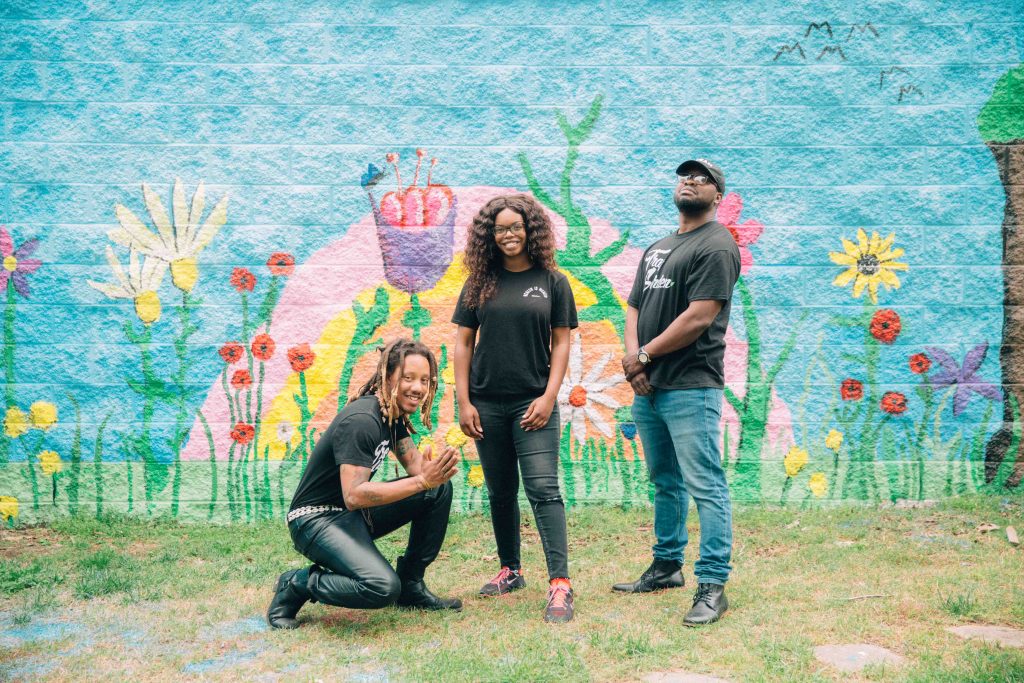
Can You Dig It?
How urban farming nonprofit Trap Garden is working to eradicate Nashville’s food deserts
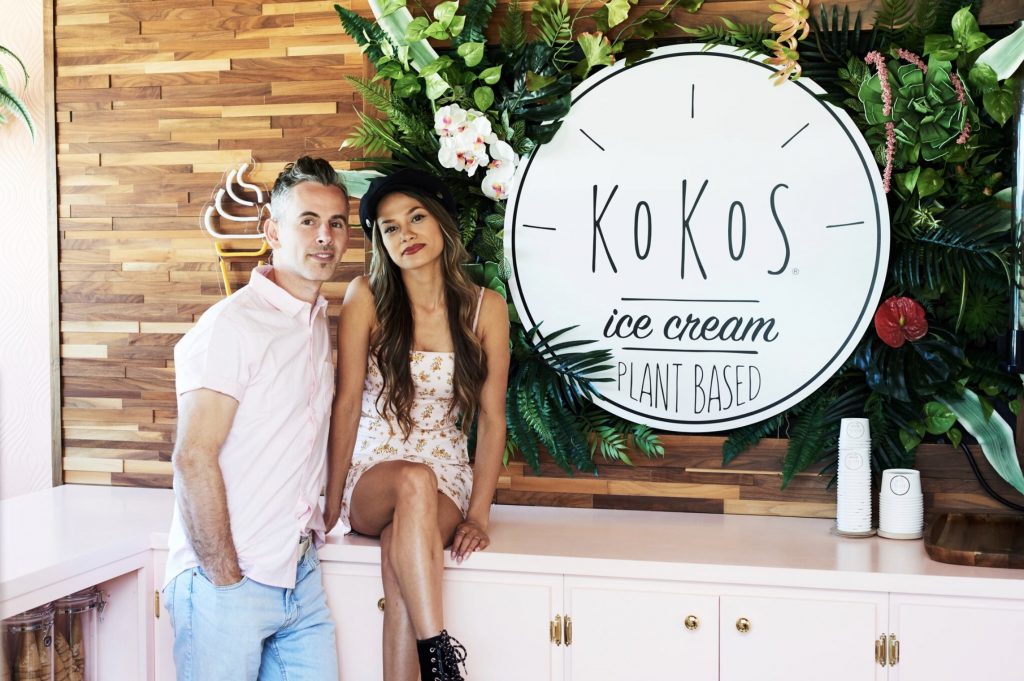
Double Scoop of Happiness
Kokos Ice Cream creators Jerusa van Lith and Sam Brooker want to show you just how good ice cream can be.

